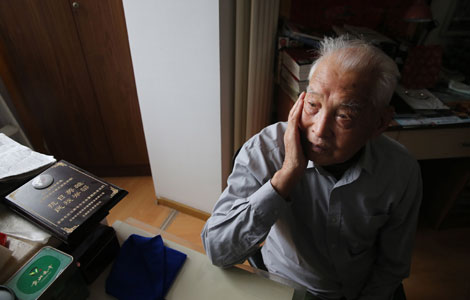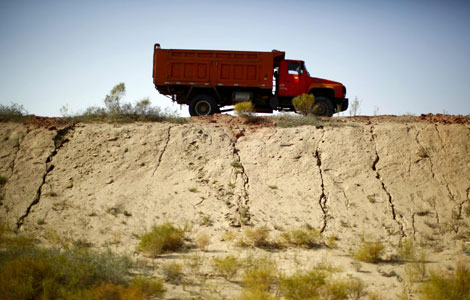A material change in how we live in the modern world
Updated: 2013-09-26 07:13
By Huang Ying (China Daily)
|
|||||||||||
Sustainable development has become a critical issue for the survival and revival of China's textile and apparel industry, according to industry senior officials.
It is the right time for domestic textile enterprises to conduct a major transformation amid the sluggish global demand for the sector, but there won't be significant change in the long term, said Jiang Hui, Chairman of China Chamber of Commerce for Import and Export of Textile and Apparel.
One of the serious challenges that China's textile industry will face ahead is a shortage of raw materials, senior officials said at a forum discussing the industry's sustainable development in August.
The decrease in petroleum resources, the rapid expansion of the global population and the escalated conflict between land for cotton and land for grain, combined with the lack of raw materials, will soon affect the country's textile sector, said Tang Shijun, director of the Experiment Center at the Quartermaster Equipment Research Institute.
In 2011, the use of textile raw materials amounted to 41.3 million tons, making up a 52 percent share of the global market.
"The level of imports of raw materials for the textile industry accounted for more than 65 percent," said Tang.
This has made it urgent for the sector to look for new sources of raw materials.Waste textiles are a good source, according to Tang.
The annual inventory of waste textiles amounted to 23 million tons, consisting of 17 million tons of chemical fibers, with the rest being natural fibers.
Most natural fibers are planted on grain fields. This must be changed, said Yao Mu, a member of the Chinese Academy of Engineering.
"We could shift the plantation of natural fibers from grain fields to desolate beach areas, saline and alkaline land, to cushion the conflict between the use of land for grain and land for cotton," said Yao.
He also mentioned research for raw material resource substitutes should also be encouraged, for example using agricultural waste products.
"In this way, not only will the environmental pollution caused by some waste products be cut, but the dependence on chemical materials on petroleum and natural gas to produce chemical fibers will be lowered," said Yao.
Also, domestic demand for apparel and clothing has a lot of potential.
Urban residents' per capita expenditure on clothing increased from 800.64 yuan in 2005 to 1,823.40 yuan in 2012, according to figures released by the China National Textile and Apparel Council.
In comparison, for people living in rural areas, the figure climbed from 148.47 yuan in 2005 to 396.40 yuan in 2012.
The export market has picked up slightly. According to the General Administration of Customs, in the first eight months of this year, China's exports of textile and apparel accumulatively reached $182.95 billion, registering a year-on-year growth of 12.9 percent.
(China Daily 09/26/2013 page15)
Today's Top News
Russia to guard Syria chemical weapon destruction
Interpol issues arrest notice for 'white widow'
Vice-Premier urges more cooperation in Eurasia
Foreign suppliers dominate
Early fish ancestor found
Joining talks on trade in services
Courier reaches for the sky with drone
New legal era for Shanghai FTZ
Hot Topics
Lunar probe , China growth forecasts, Emission rules get tougher, China seen through 'colored lens', International board,
Editor's Picks

|

|

|

|

|

|





